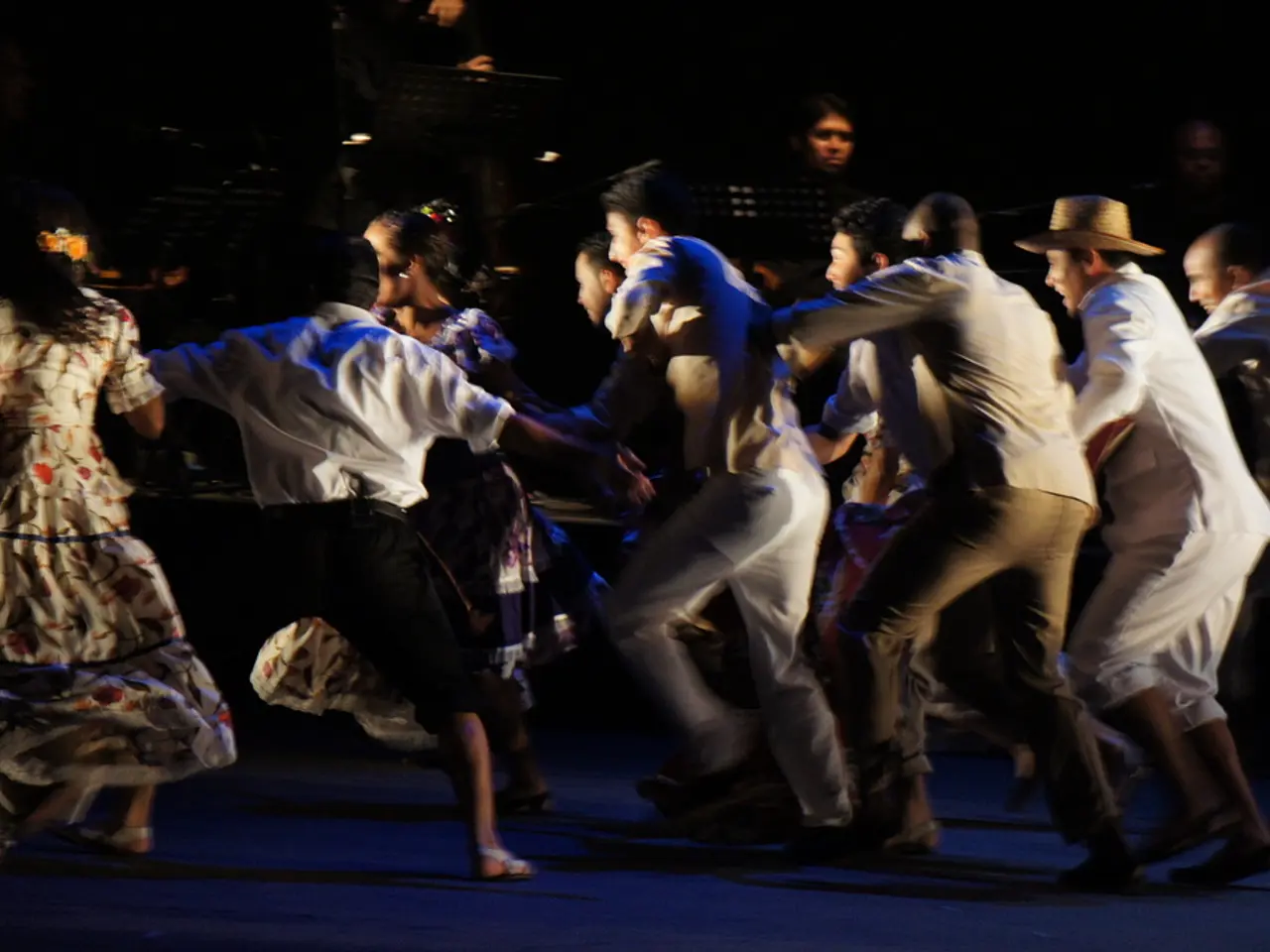Dance and Motion Therapy: Advantages, Operational Mechanics, and Insights
Dance movement therapy (DMT) is a psychotherapeutic practice that uses movement to enhance health and well-being, as defined by the American Dance Therapy Association (ADTA). This holistic approach to healing, which emerged in the 1940s, is gaining recognition for its significant benefits across various populations and conditions.
Key evidence-based benefits of DMT include mental health improvements, developmental and social gains in neurodevelopmental disorders, physical health and fitness, and support for healthy aging.
Mental health improvements have been observed through DMT's ability to reduce anxiety, improve mood, and enhance emotional regulation. For instance, a 2025 pilot study using AI-driven biometric measures found that DMT within Extended Reality environments significantly reduced anxiety levels in individuals with episodic-paroxysmal anxiety. Acute aerobic exercise through dance also enhances self-esteem and decreases mood disturbances by altering amygdala connectivity.
In the realm of neurodevelopmental disorders, structured dance interventions have shown to improve communication, social cognition, and reduce core behaviors related to autism in children and adolescents. A UCLA randomized controlled trial with 41 participants aged 4-17 demonstrated enhanced motor abilities and social skills after 10 weeks of dance classes.
Physical health and fitness benefits of DMT include strengthening body schema (a mental representation of body position), improving physical fitness, and promoting healthier lifestyle choices such as better diet. The holistic embodiment in such activities potentially benefits both healthy and clinical populations, with recommendations to adapt these activities for diverse groups.
Dance movement therapy also supports healthy aging by promoting physical, emotional, cognitive, and social health among older adults. This makes it an effective strategy for healthy aging and well-being preservation.
Notably, dance therapy has more of an effect in people from Africa than those from Europe or America in lowering blood pressure. Additionally, there is some evidence that dance movement therapy may improve gait in individuals with Parkinson's disease.
Dance therapists work in various settings, including rehabilitation centers, psychiatric hospitals, schools, and private practice. They use dance as a means of nonverbal communication, with techniques that can vary from ordinary and subtle to improvisational and expressive.
In conclusion, the current scientific consensus, supported by randomized controlled trials, systematic reviews, and cutting-edge biometric research, is that dance movement therapy is an effective, multidimensional intervention improving psychological well-being, social functioning, motor skills, and physical health across a broad demographic spectrum, from neurodiverse youth to aging adults.
- Dance movement therapy (DMT) significantly reduces anxiety levels in individuals with episodic-paroxysmal anxiety, as demonstrated by a 2025 pilot study using AI-driven biometric measures.
- Structured dance interventions have shown to improve communication, social cognition, and reduce core behaviors related to autism in children and adolescents, such as the UCLA randomized controlled trial with 41 participants aged 4-17.
- DMT also supports healthy aging by promoting physical, emotional, cognitive, and social health among older adults, making it an effective strategy for healthy aging and well-being preservation.
- Dance movement therapy may improve gait in individuals with Parkinson's disease, and it has a more significant effect in people from Africa in lowering blood pressure compared to those from Europe or America.




